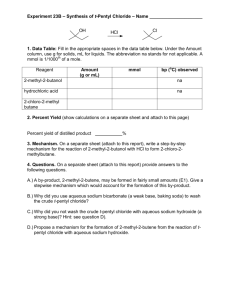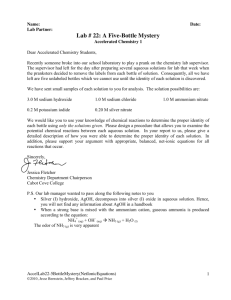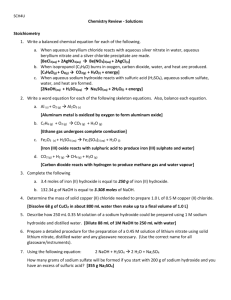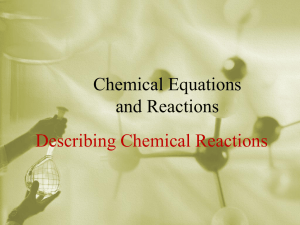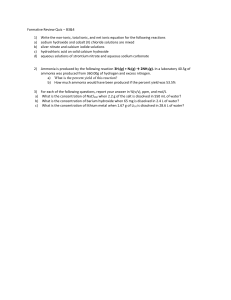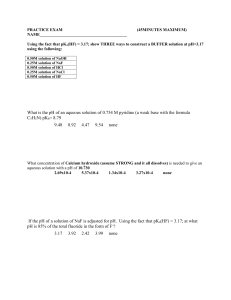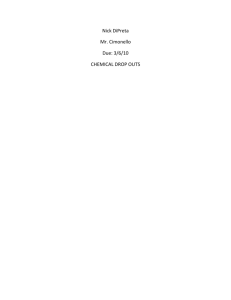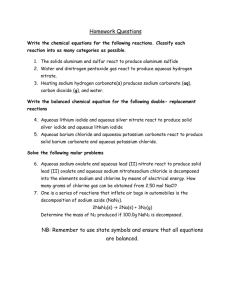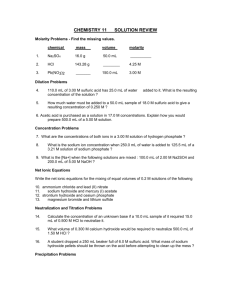Chemistry Review: Solutions, Stoichiometry, Periodic Table
advertisement
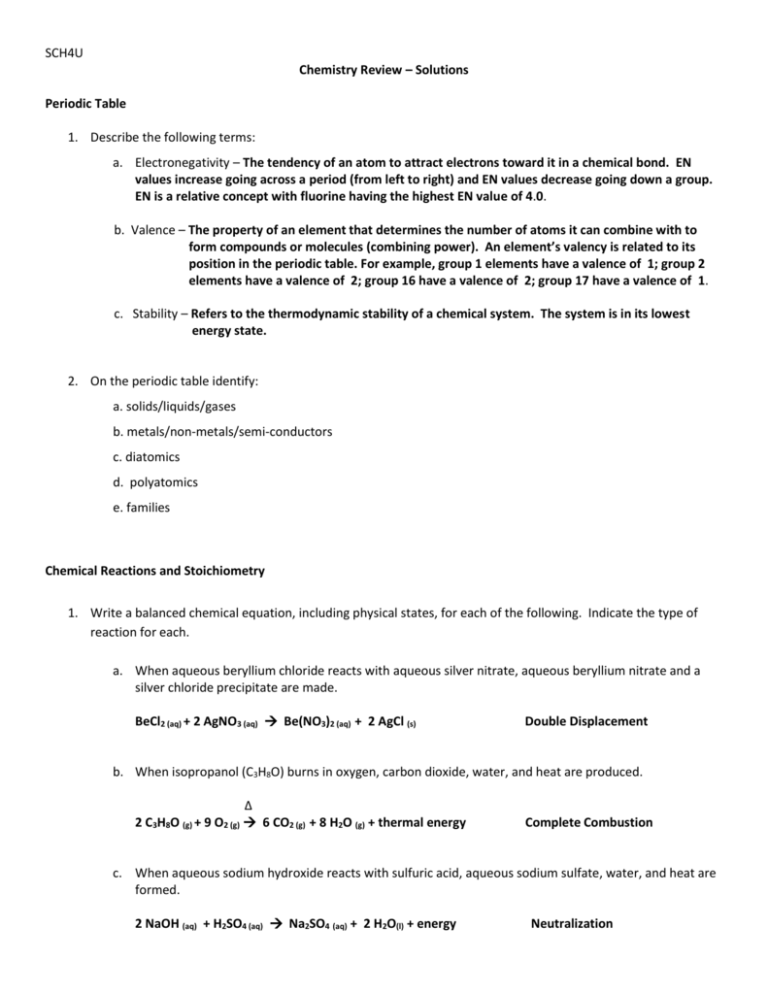
SCH4U Chemistry Review – Solutions Periodic Table 1. Describe the following terms: a. Electronegativity – The tendency of an atom to attract electrons toward it in a chemical bond. EN values increase going across a period (from left to right) and EN values decrease going down a group. EN is a relative concept with fluorine having the highest EN value of 4.0. b. Valence – The property of an element that determines the number of atoms it can combine with to form compounds or molecules (combining power). An element’s valency is related to its position in the periodic table. For example, group 1 elements have a valence of 1; group 2 elements have a valence of 2; group 16 have a valence of 2; group 17 have a valence of 1. c. Stability – Refers to the thermodynamic stability of a chemical system. The system is in its lowest energy state. 2. On the periodic table identify: a. solids/liquids/gases b. metals/non-metals/semi-conductors c. diatomics d. polyatomics e. families Chemical Reactions and Stoichiometry 1. Write a balanced chemical equation, including physical states, for each of the following. Indicate the type of reaction for each. a. When aqueous beryllium chloride reacts with aqueous silver nitrate, aqueous beryllium nitrate and a silver chloride precipitate are made. BeCl2 (aq) + 2 AgNO3 (aq) Be(NO3)2 (aq) + 2 AgCl (s) Double Displacement b. When isopropanol (C3H8O) burns in oxygen, carbon dioxide, water, and heat are produced. Δ 2 C3H8O (g) + 9 O2 (g) 6 CO2 (g) + 8 H2O (g) + thermal energy Complete Combustion c. When aqueous sodium hydroxide reacts with sulfuric acid, aqueous sodium sulfate, water, and heat are formed. 2 NaOH (aq) + H2SO4 (aq) Na2SO4 (aq) + 2 H2O(l) + energy Neutralization SCH4U 2. Determine the mass of copper (II) chloride needed to prepare 1.00 L of 0.500 M copper (II) chloride solution from solid copper (II) chloride. 67.2 g CuCl2 3. Describe how 250 mL 0.35 M solution of a sodium hydroxide could be prepared using 1.0 M sodium hydroxide and distilled water. Using a 250 mL graduated cylinder, measure 88 mL of 1.0 M NaOH. Add dH2O until the bottom of the meniscus reaches the 250 mL mark. Pour final solution into a beaker and mix. 4. Prepare a detailed procedure for the preparation of 5.00 x 102 mL of 0.45 M lithium nitrate solution using solid lithium nitrate, distilled water and any glassware necessary. (Use the correct name for all glassware/instruments). Using an electronic balance measure out 15.5 g of LiNO3. Add the LiNO3 in to a 5.00 x 102 mL volumetric flask. Fill the flask about 2/3 with distilled water (dH2O). Stopper and mix. Add more dH2O up to the etched line (the 500 mL mark). Stopper and mix. 5. Using the following equation: 2 NaOH (aq) + H2SO4 (aq) 2 H2O (l) + Na2SO4 (aq) How many grams of sodium sulfate will be formed if you start with 2.00 x 102 g of sodium hydroxide and you have an excess of sulfuric acid? 355 g Na2SO4 6. Determine the volume of 0.100 M HCl required to react completely with 5.00 grams of calcium hydroxide? 2 HCl (aq) + Ca(OH)2 (aq) CaCl2 (aq) + 2 H2O (l) 1.35 L HCl 7. If 15.0 grams of calcium hydroxide is combined with 75.0 mL of 0.500 M HCl, how many grams of calcium chloride would be formed? 2.08 g CaCl2
